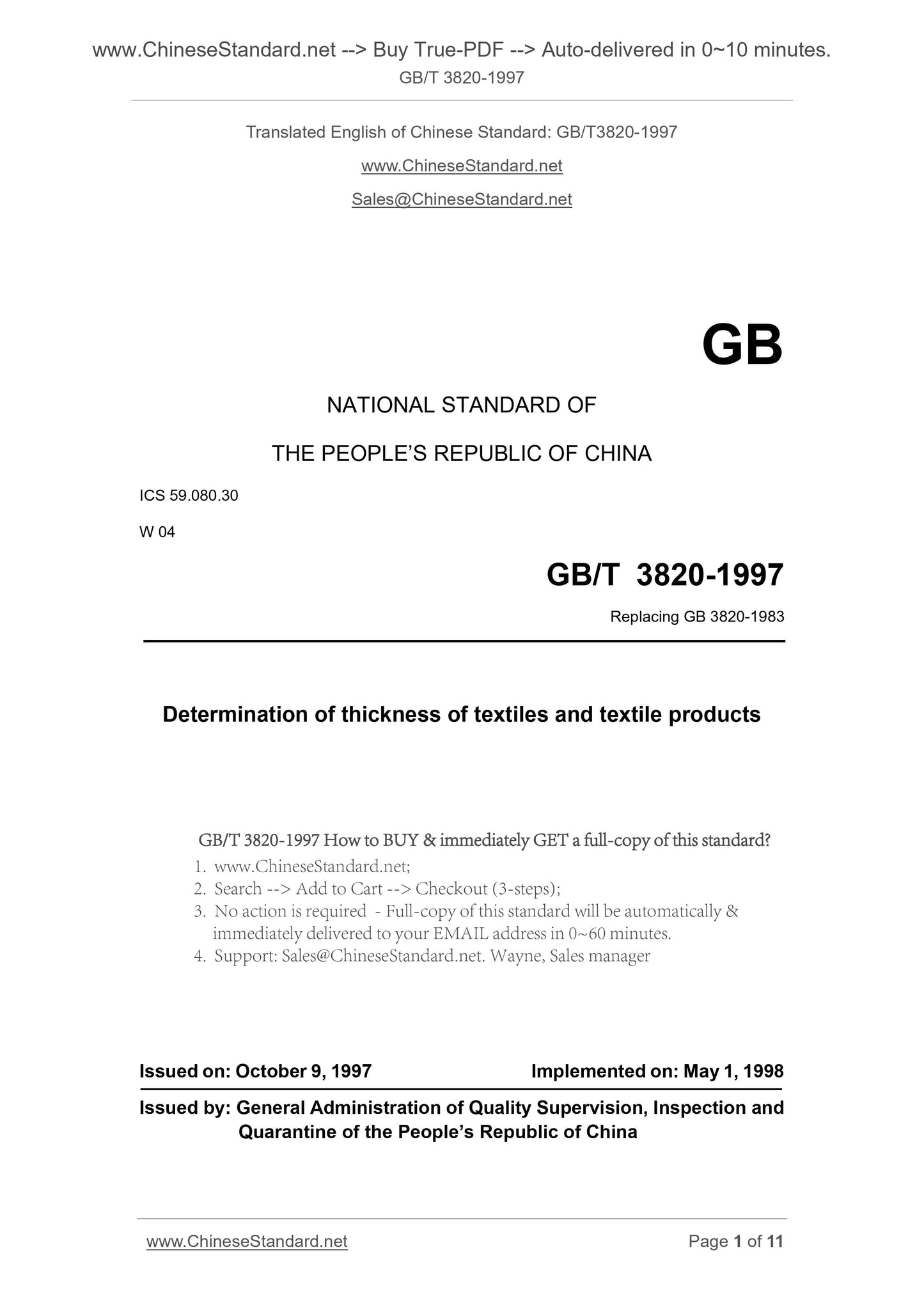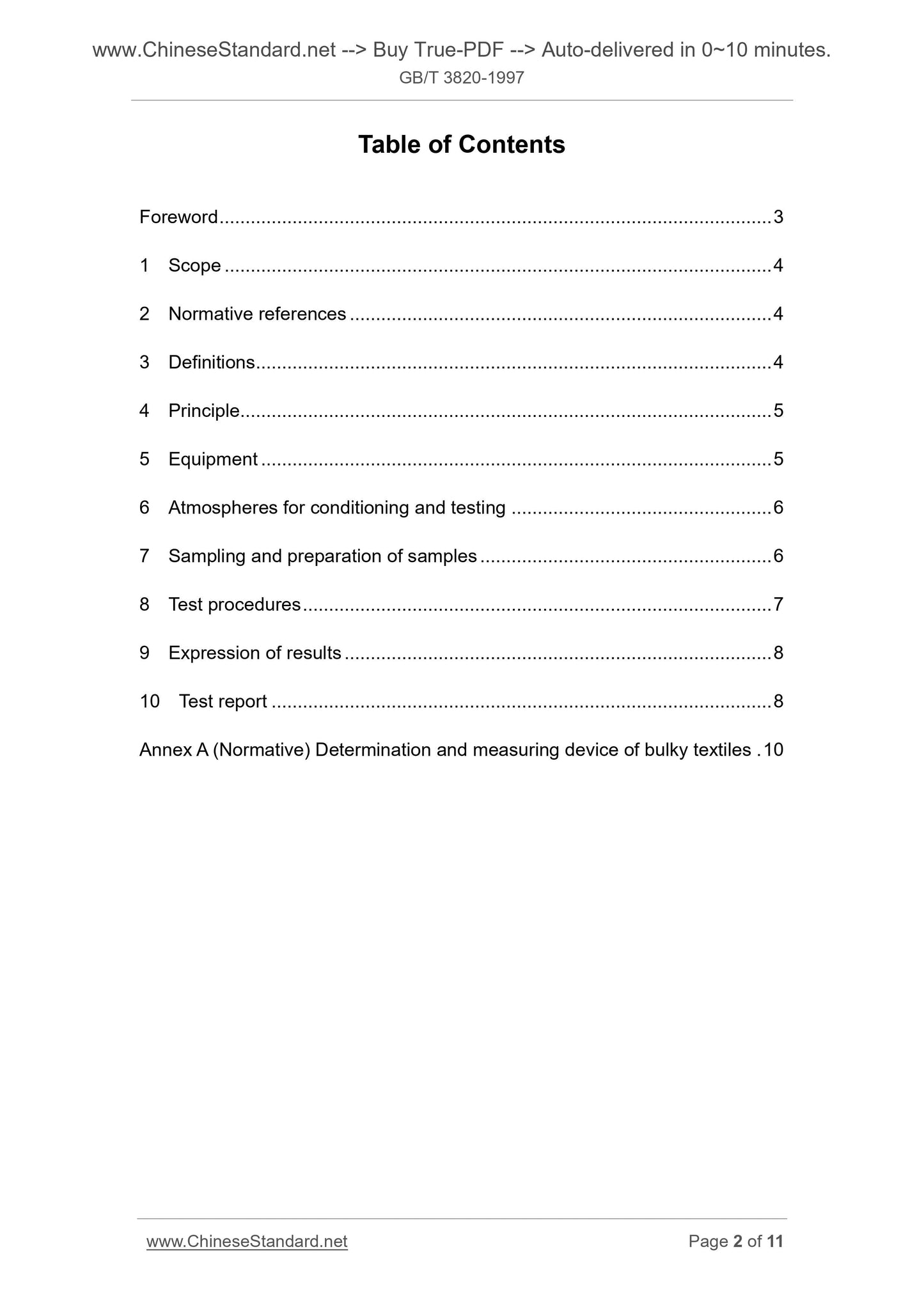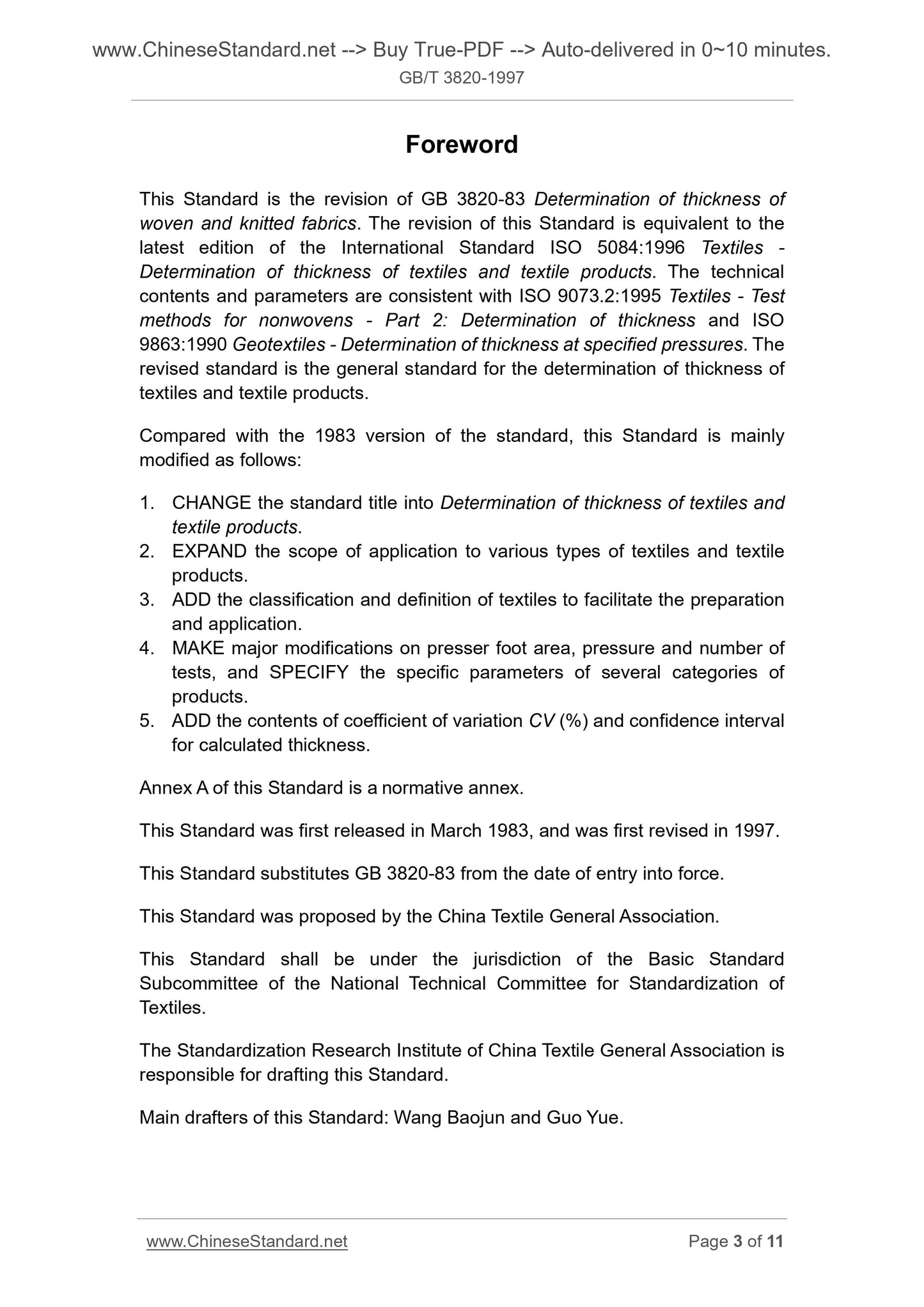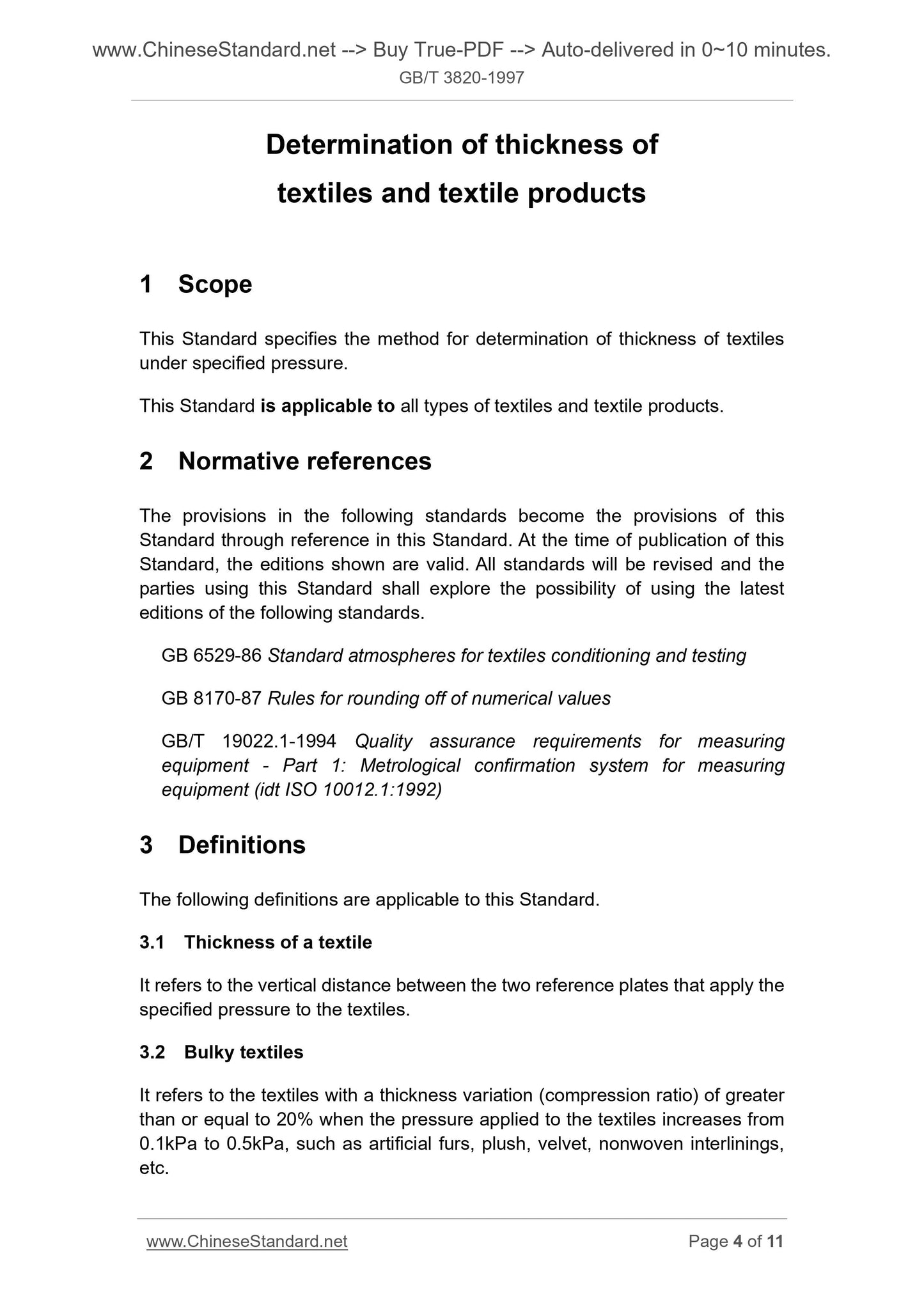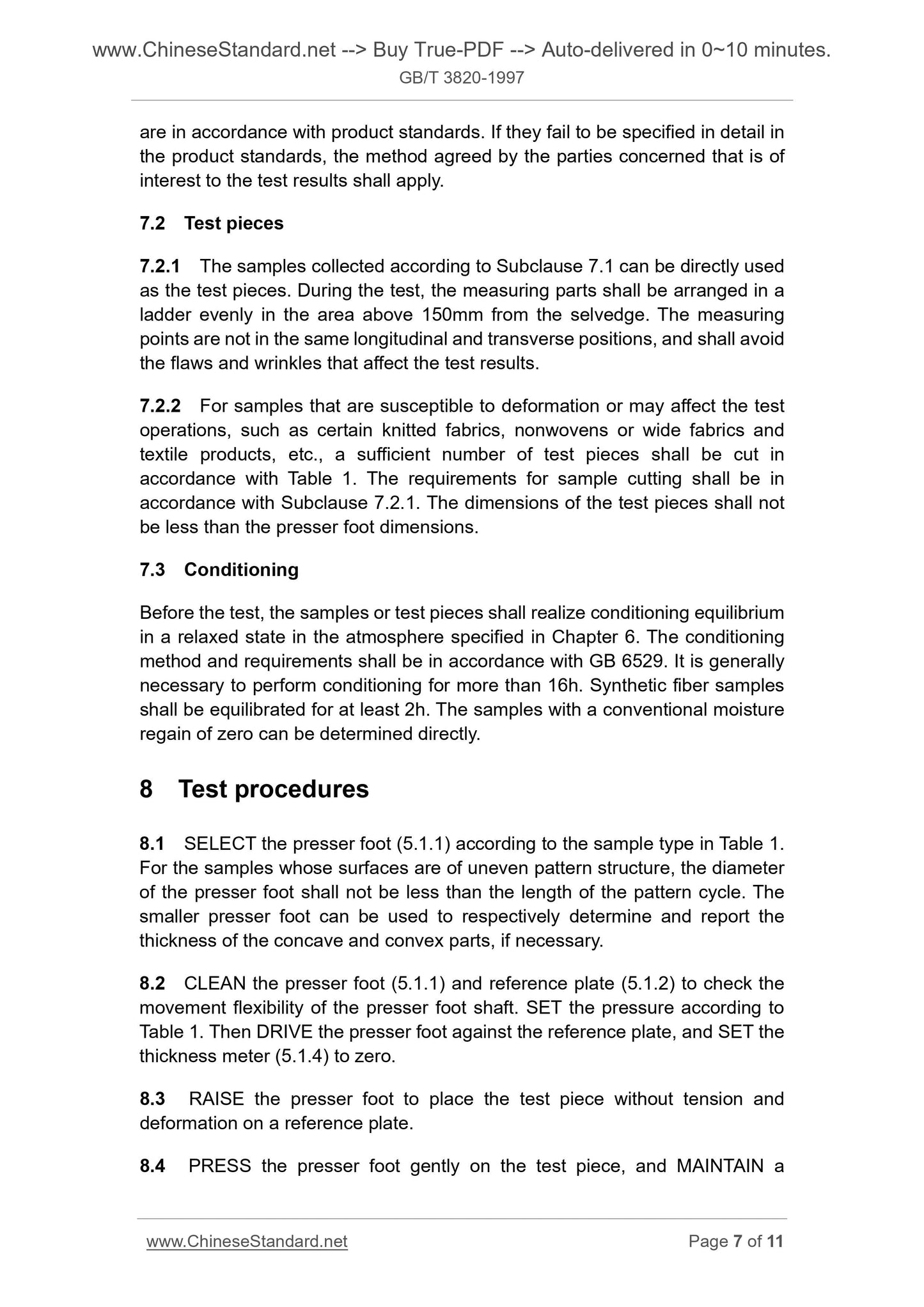1
/
of
5
www.ChineseStandard.us -- Field Test Asia Pte. Ltd.
GB/T 3820-1997 English PDF (GB/T3820-1997)
GB/T 3820-1997 English PDF (GB/T3820-1997)
Regular price
$90.00
Regular price
Sale price
$90.00
Unit price
/
per
Shipping calculated at checkout.
Couldn't load pickup availability
GB/T 3820-1997: Determination of thickness of textiles and textile products
Delivery: 9 seconds. Download (and Email) true-PDF + Invoice.Get Quotation: Click GB/T 3820-1997 (Self-service in 1-minute)
Newer / historical versions: GB/T 3820-1997
Preview True-PDF
Scope
This Standard specifies the method for determination of thickness of textilesunder specified pressure.
This Standard is applicable to all types of textiles and textile products.
Basic Data
| Standard ID | GB/T 3820-1997 (GB/T3820-1997) |
| Description (Translated English) | Determination of thickness of textiles and textile products |
| Sector / Industry | National Standard (Recommended) |
| Classification of Chinese Standard | W04 |
| Classification of International Standard | 59.080.30 |
| Word Count Estimation | 7,755 |
| Date of Issue | 10/9/1997 |
| Date of Implementation | 5/1/1998 |
| Older Standard (superseded by this standard) | GB 3820-1983 |
| Quoted Standard | GB 6529-1986; GB/T 8170-1987; GB/T 19022.1-1994 |
| Adopted Standard | ISO 5084-1996, MOD; ISO 9073-2-1995, NEQ; ISO 9863-1990, NEQ |
| Issuing agency(ies) | State Bureau of Technical Supervision |
| Summary | This standard specifies the method for measuring the pressure in the provisions of the textile thickness. This standard applies to all types of textiles and textile products. |
Share
